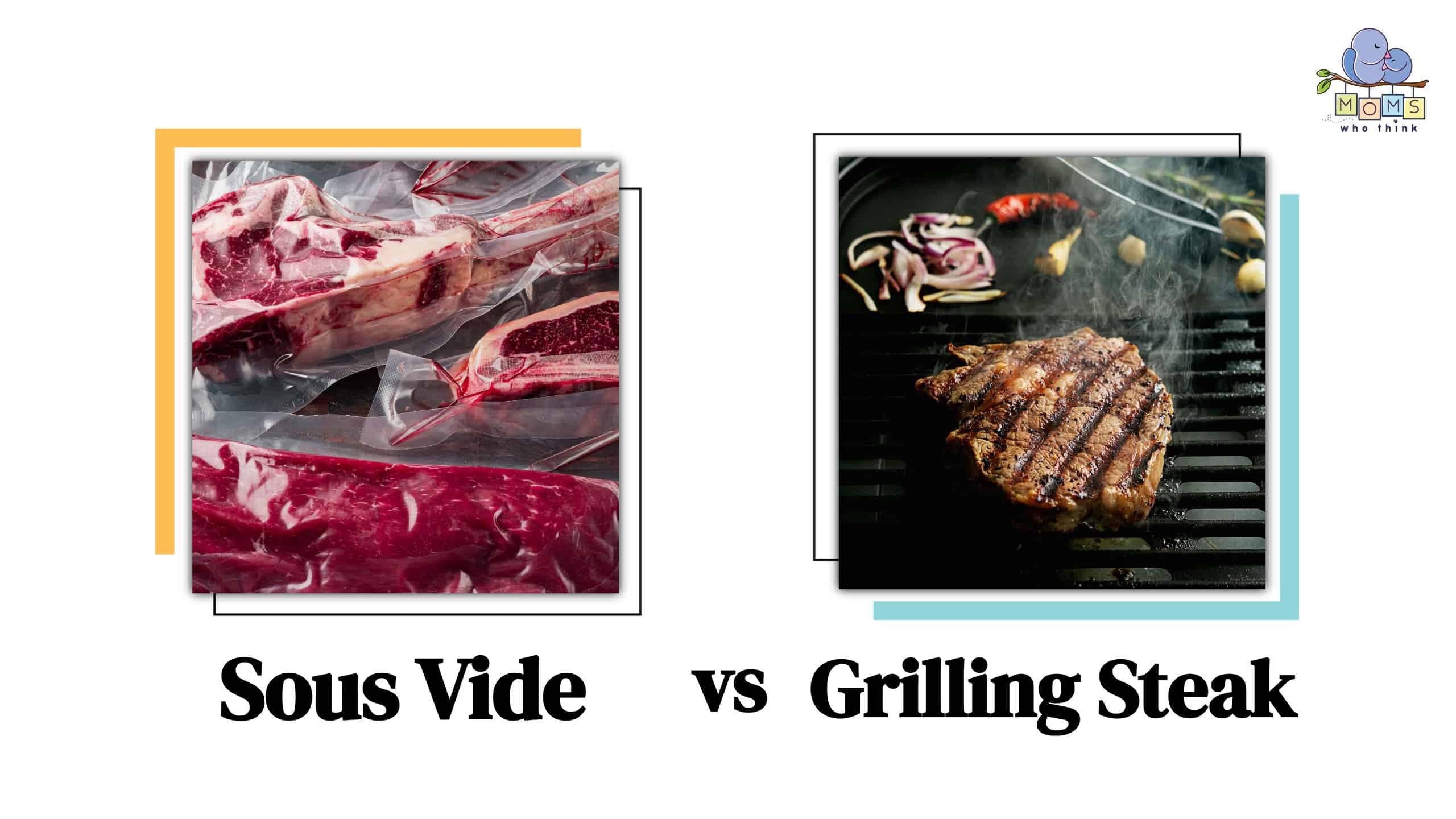It's easy to say that sous vide can provide you with a precise temperature every time, and a grill can provide you with a nice smoky flavor, but there are other factors to consider when deciding which cooking method to use. For years foodies have been fascinated by the debate of sous vide steak vs. grill. However, there is more to debate than just the taste.
In this article, we will explore the unique characteristics of each cooking method, the differences between the two methods, and compare the pros and cons. So, whether you are a curious home cook searching for new cooking methods or an experienced cook, this article has a comparison you wouldn't want to miss.
Let's dive into this ultimate comparison between sous vide steak vs. grilled steak!
Sous Vide Steak vs. Grill: What Are the Differences?
Sous vide involves sealing the steak in a bag and cooking it in a water bath at a precise temperature for an extended period. This method ensures even doneness throughout the steak, preserving its juices and resulting in a tender, succulent texture. However, it doesn't create a seared crust unless finished on a grill or skillet. Grilling, on the other hand, involves cooking the steak on a grill at high temperatures. This method creates a flavorful crust due to the Maillard reaction, but it can be more challenging to achieve a consistent level of doneness throughout the steak, especially without a lot of experience. The intense heat can also potentially overcook or dry out the steak if not monitored carefully.
Overall, sous vide can produce superior results compared to grilling as it ensures steaks won't be undercooked while also heating the interior of the steak to a more uniform level. Many combine sous vide cooking with a quick sear on the grill.
Let's go over some of the other differences between the sous vide steak vs. grill debate:
- Texture: Grilling gives the steak a crispy outer layer with a juicy, tender inside, whereas sous vide gives a juicy, tender texture throughout the steak.
- Appearance: Grilling gives a better appearance to the steak. It chars the outside, giving it a brownish exterior and sometimes leaving grill marks on the steak. Sous vide retains the original color of the cut of meat. The appearance of the steak will depend on the cut.
- Health benefits: Sous vide retains the nutrients, vitamins, and proteins in the steak, while grilling can cause the steak to lose essential nutrients by overcooking the cut of meat when it gets exposed to high heat and flames.
- Versatility: Sous vide is a more versatile cooking method, it's excellent for cooking steak, but you can also cook vegetables, eggs, or even desserts using this method. Grilling is best for cooking meats and some vegetables.
Ultimately, there are significant differences between these two cooking methods, but both options can provide you with excellent results. So now, let's dig deeper and explore the pros and cons of the sous vide steak vs. grill debate!
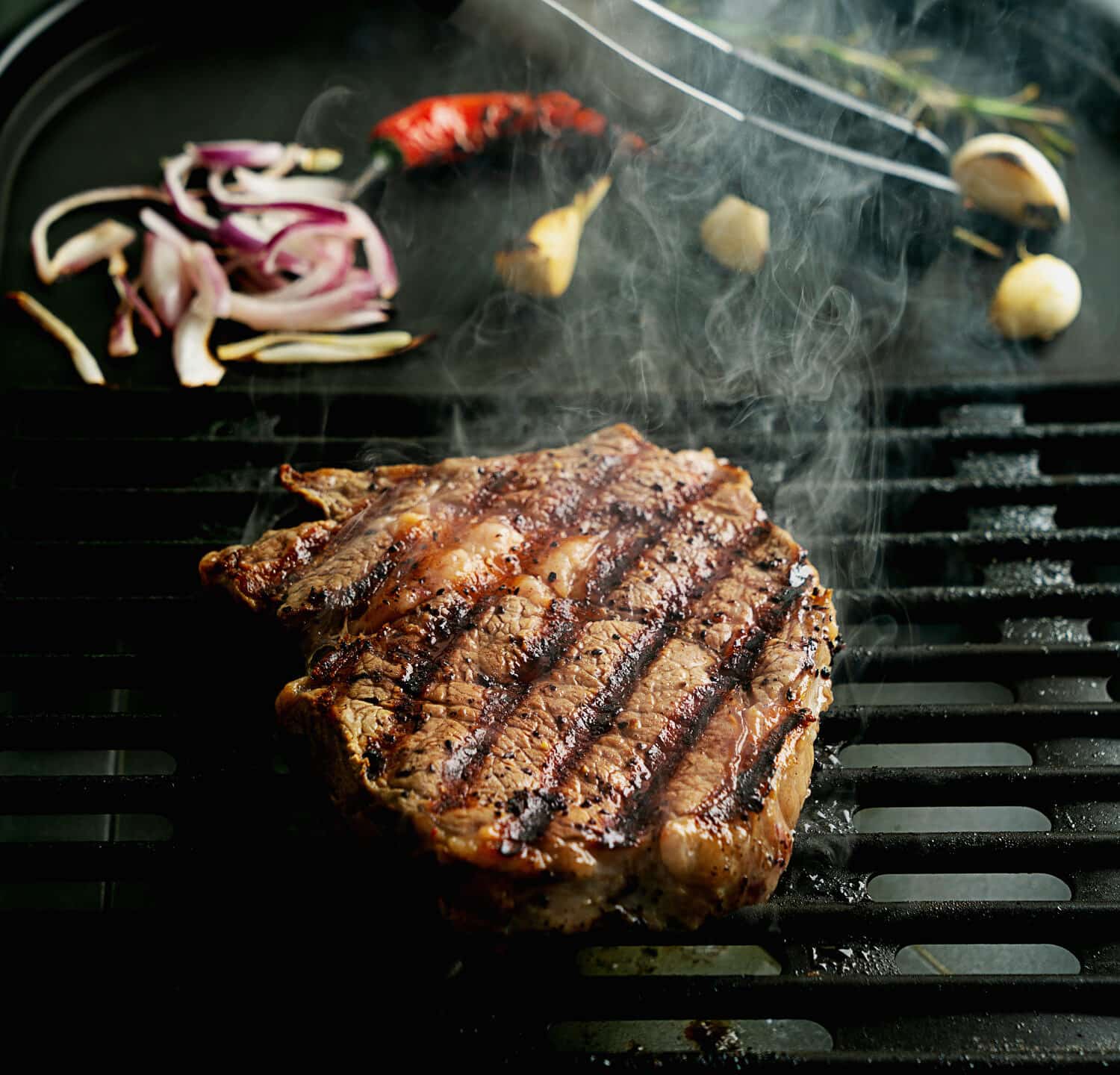
©Pedal to the Stock/Shutterstock.com
Sous Vide Steak vs. Grill: The Pros and Cons
Deciding between sous vide or using a grill can be challenging because both have unique advantages and disadvantages. So let's take a closer look at the pros and cons of each method.
| Pros of Sous Vide | Pros of Grilling | Cons of Sous Vide | Cons of Grilling |
|---|---|---|---|
| Sous vide has precise temperature control. | Cooking steak on a grill is fast and easy. | This method requires special cooking equipment. | It's hard to control the heat, so you risk overcooking the steak. |
| You don't have to supervise the steak constantly. | The steak doesn't need additional cooking. | It takes a longer time period to cook the steak. | Weather conditions can interfere with grilling. |
| It will help retain tenderness and moisture in the steak. | You don't need any extra equipment. | Some food, such as steak, will need additional cooking, such as broiling or pan-searing. | Using a grill will require more attention. |
| Reliable and consistent results. | A grill provides a unique smokey, charred flavor for your steak. | The steak will not have the charred and smokey flavor grilling will give it. | Using a grill is a fire and burn hazard. |
What is Sous Vide?
Introduced by Benjamin Thompson, sous vide is a low-temperature cooking method first used in 1971. Sous vide is a French word that translates to “under vacuum” in English. This cooking method in France was popular in restaurants since it first got introduced to the public, but it wasn't until almost three decades later that it became popular in America.
Sous vide is a low-temperature cooking method that involves placing partially cooked or raw steak in a food-safe vacuum-sealed bag. You then place the vacuum-sealed steak in water that is heated to a precise temperature to cook for the recommended time for the specific cut of beef. Since the water temperature stays steady, the steak gets cooked evenly and precisely, reducing the risk of being overcooked.
Overall, sous vide is a consistent and precise cooking method that has become popular over the years because it's a way to cook steak perfectly every time. However, there is specific equipment you will need to use the sous vide method at home. Let's go over what you need to get started!
Sous Vide Equipment: What You Need to Get Started
Sous vide might seem intimidating or complicated, but it's a simple way to cook your steaks with the right equipment and clear knowledge. However, this cooking method requires some common kitchen utensils and one essential specialty equipment to use the sous vide method at home.
Here are the six recommended items to get you started cooking steak with the sous vide method:
- Immersion cooker: This is the essential equipment; it heats and circulates the water.
- Pot/container: You need a pot or container to hold the water.
- Sous vide bags: There are airtight and heat-resistant bags to hold the steak.
- Vacuum sealer: This will remove the air from the bags and seal them, ensuring the steak is well-preserved and cooks evenly.
- Aluminum foil or lid: This will help keep the heat in while preventing the water from evaporating, helping to keep the water temperature steady.
- Cast iron skillet or frying pan: After the steak gets cooked, pan-sear it to give it a nice crust.
The amount of sous vide bags required and the pot or container size depends on the number of people you serve. In addition, alternative options are available for some of the recommended items for cooking steak with the sous vide method at home.
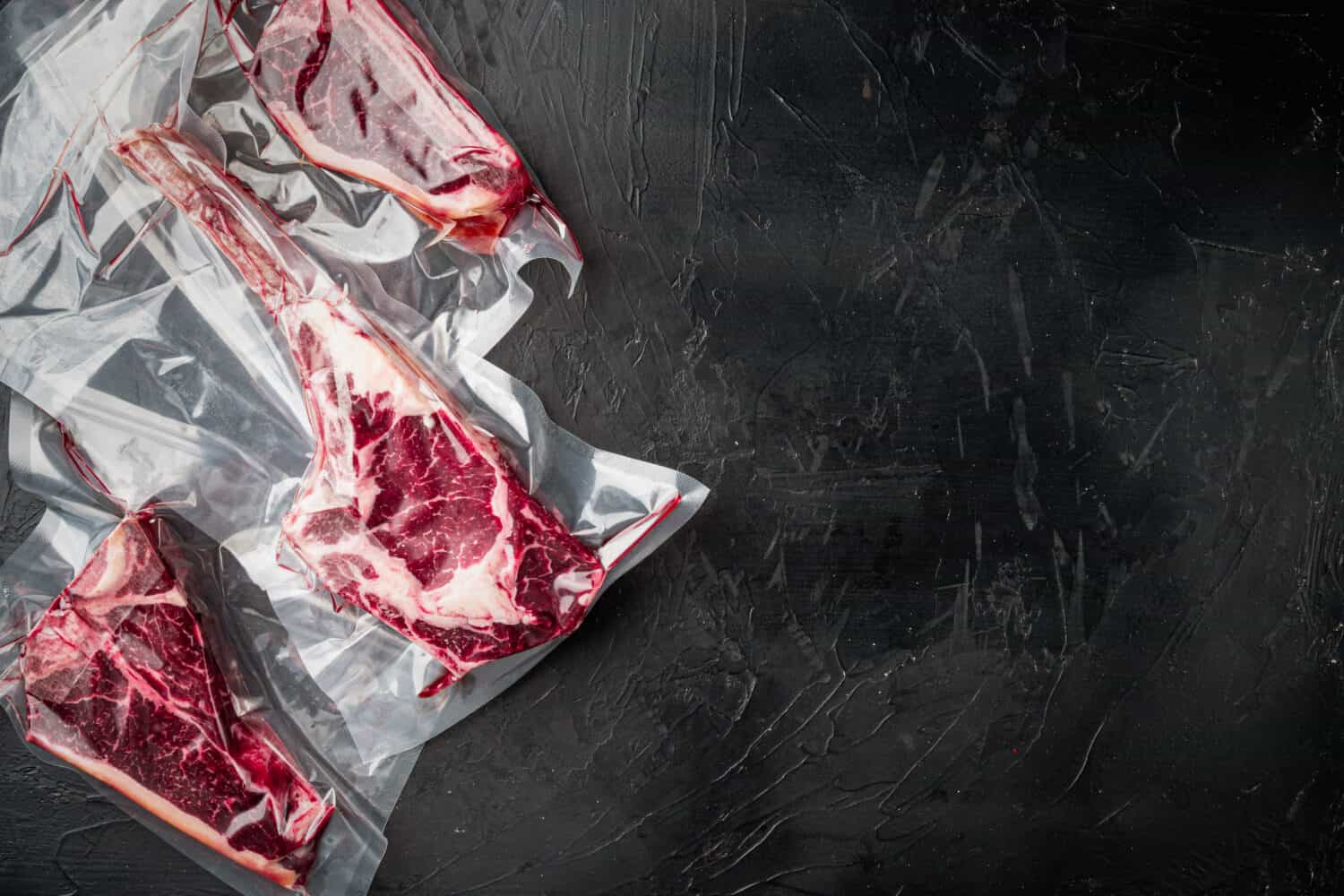
©Chatham172/Shutterstock.com
Alternative Options for Sous Vide Equipment
Here are the alternative options you could replace the recommended items with:
- Ziploc bags: This is a sous vide bag alternative. Use food-grade, BPA-free, freezer Ziplock bags to ensure you have a thick plastic Ziplock bag that can withstand high temperatures and protect the safety of your health while avoiding potential health risks related to BPA.
- Vacuum sealer (optional): If you're using Ziplock bags, you will not need a vacuum sealer. Instead, use the water displacement method to remove the air. This method is effective, but you must remove almost all air from the bag to avoid uneven cooking. Air bubbles will make the bag float, resulting in uneven cooking.
- Ping-pong balls: Instead of using aluminum foil or a lid, you can add a layer of Ping-Pong balls to the surface of the water. This will prevent heat from escaping while maintaining a consistent water temperature and allowing you to manage the water level during cooking.
- Propane torch or broiler: If you don't want to use a cast iron skillet or frying pan, you can sear the cooked steak using a propane torch or a broiler.
Although alternative options are available, using the recommended items for the sous vide cooking method will provide you with the best results for your steak.
What is the Grill Method?
In 1952, George Stephen invented the first grill, transforming outdoor cooking. Before this invention, people would place charcoal on a thin metal sheet above a bed of burning coals. Over time, grilling became more popular and is a core part of American culture. Grilling is a way to cook perfectly charred steaks and a great way to spend time with friends and family.
Grilling is a fast, high-heat cooking method used to cook mostly meat, but you can also cook vegetables. This method usually involves charcoal, propane, or natural gas to create a flame that heats the grill rack and cooks the raw steak or food on the rack.
Ultimately, grilling is great for social gatherings and creating unique flavors in your steak. But there are many types of grills that you can use to produce similar results. In this next section, we will review the most common types of grills used.
Different Types of Grills
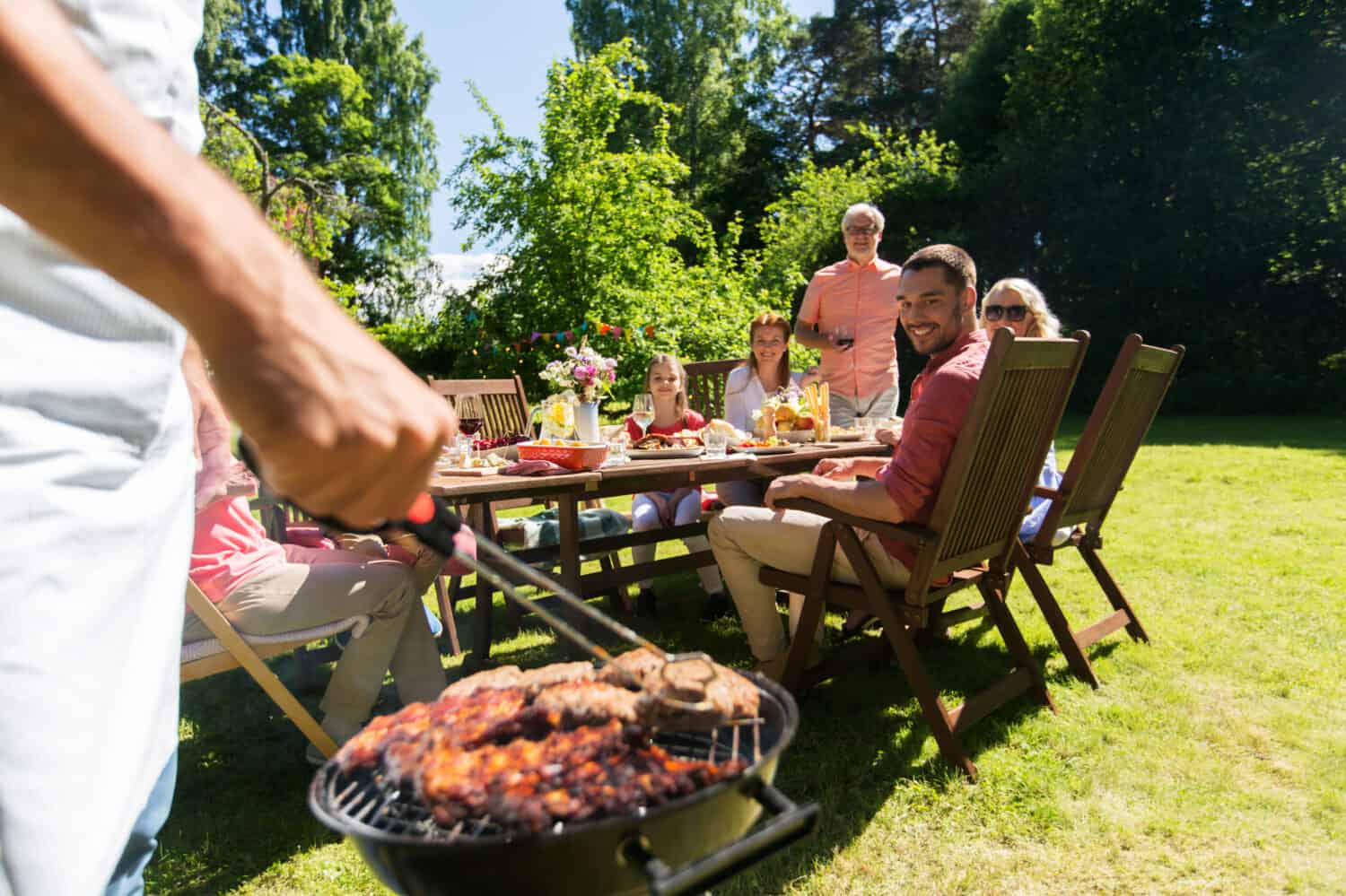
©Ground Picture/Shutterstock.com
You could use many types of grills to cook your steak, the most common being a charcoal grill. Let's review the top four grills people use to cook their steaks.
- Charcoal grill: This is the most commonly used grill. Cooking on a direct flame creates a smokey, charred taste on the steak.
- Pellet grill: This type of grill works by burning wood pellets. The pellets are fed through a chamber and ignited to create heat and smoke that cooks the steak.
- Propane grill: This type of gas works from the use of propane. This grill heats up quickly and has high power, resulting in a more effective grilling process. It also has the benefit of being able to control the temperature.
- Electric grill: This grill uses an electric heating element to heat the steak. You can use an electric grill inside and outside. This is a very convenient option because even in cold or rainy weather, you can still enjoy grilled steak.
Final Thoughts
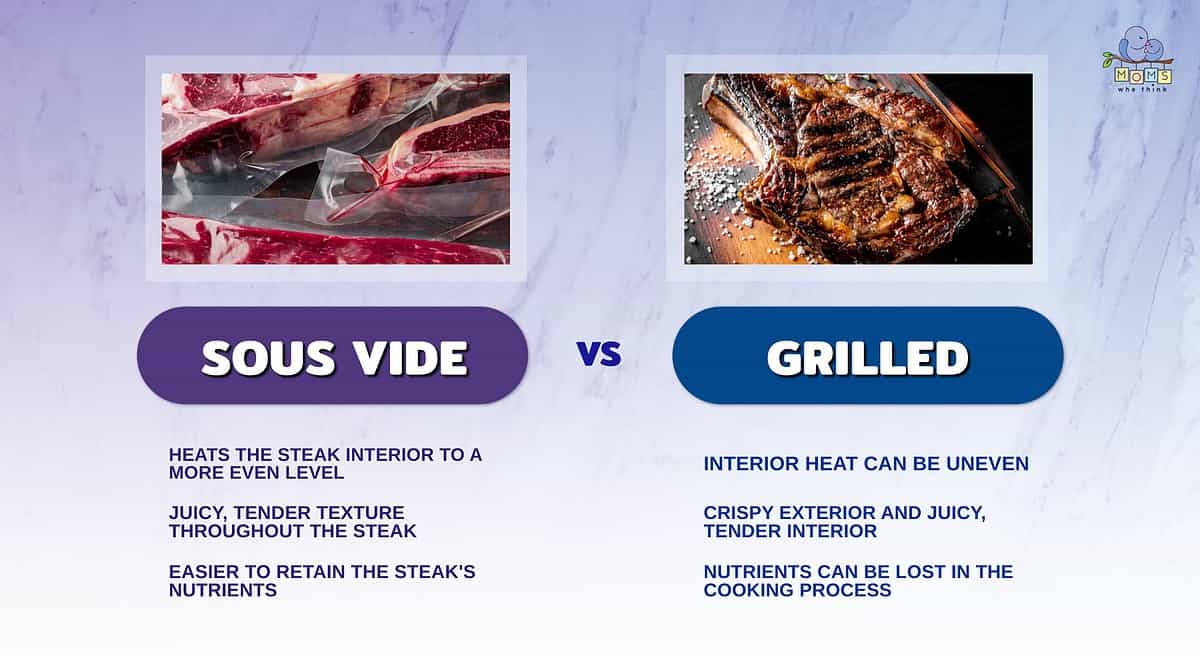
- Sous vide heats the steak's interior to a more even level than grilling, giving you a better cook.
- The way that sous vide cooks a steak gives it a juicy, tender texture throughout. Grilling a steak will give it a crispy exterior and tender interior; some may favor this contrast of textures.
- Sous vide will retain the steak's nutrients, while grilling may lose some of them. If you're looking to get everything you can out of a steak nutritionally, then sous vide is the way to go.
It's safe to say that sous vide and grilling are two effective ways to cook mouthwatering steaks, but there are differences to consider beyond the taste that each method produces. Grilling is a high-temperature, fast method that will leave your steak with a crispy, delicious texture. Sous vide is a low-temperature, slow-cooking method that will leave your steak evenly cooked while reducing the risk of overcooking.
Sous vide requires more equipment, but grilling requires more attention while cooking. Understanding the differences between these two cooking methods will make it much easier to decide which method to prepare your steak next meal, but both methods will leave your steak with a flavor you will crave!
Check out this epic steak recipe for your next meal:
Print
Spinach-stuffed Flank Steak
Ingredients
¼ cup dried tomatoes (not oil packed)
1 1-pound beef flank steak or top round steak, trimmed of separable fat
⅛ teaspoon salt
⅛ teaspoon black pepper
1 10-ounce package frozen chopped spinach, thawed and well drained
2 tablespoons grated Parmesan cheese
2 tablespoons snipped fresh basil
Instructions
1. In a small bowl soak the dried tomatoes in enough hot water to cover for 10 minutes. Drain. Snip into small pieces.
2. Meanwhile, score both sides of steak in a diamond pattern by making shallow diagonal cuts at 1-inch intervals. Place meat between 2 pieces of plastic wrap. Working from center to edges, pound with the flat side of a meat mallet into a 12×8-inch rectangle. Remove plastic wrap. Sprinkle with the salt and pepper.
3. Spread the spinach over the steak. Sprinkle the softened tomatoes, Parmesan cheese, and basil. Roll the steak up from a short side. Secure with wooden toothpicks at 1-inch intervals, starting ½ inch from an end. Cut between the toothpicks into eight 1-inch slices.
4. Place sides cut side down on the unheated rack of a broiler pan. Broil 3 to 4 inches from the heat until done as desired, turning once. Allow 10 to 12 minutes for medium rare (145°F) or 12 to 16 minutes for medium (160°). Before serving, remove toothpicks.
